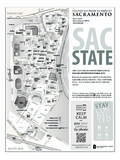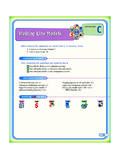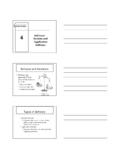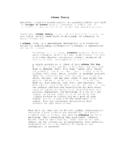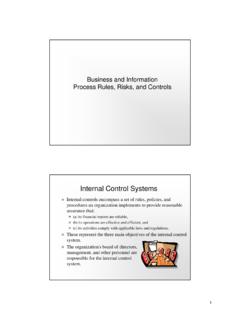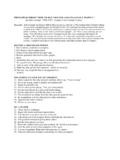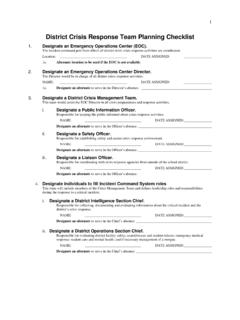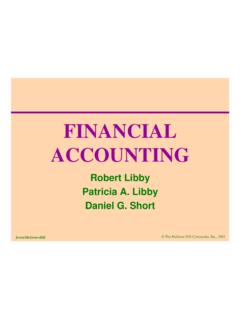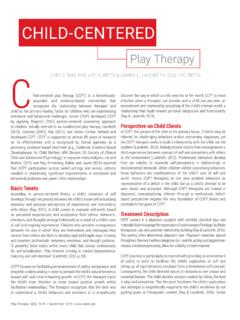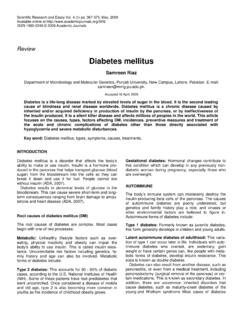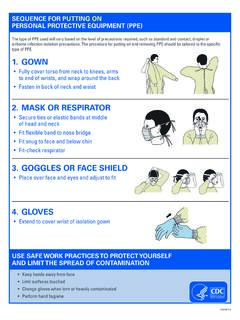Transcription of Self-Injury Interventions for School Psychologists Part ...
1 MISTY BONTASHERRY JANKANSLIANA LOPESDELIA VILLASENORSelf-Injury Interventions for School PsychologistsOutline of PresentationPart One: Signs/Risk FactorsPart Two: Referral to students/ School Psychologist RolePart Three: for High/Low risk/Immediate Parents/Outside ReferralsPart Four: Based CounselingPart Five: Prolonged Care for the AccommodationsIntroductionyTerms used for Self-Injury : cutting, self-harm, self-mutilation & non-suicidal Self-Injury (NSSI)yToday s presentation will use the term Self-Injury (SI)ySI can take many forms: The most common is cutting the skin followed closely by burning and hitting oneself. yOther forms: scratching the skin, biting, preventing wounds from healing, pulling out clumps of hair, placing objects under the skin, and head banging Prevalancey15-20% of adolescents admitted to engaging in SI at least onceyWhen students were provided with a checklist of behaviors, 30% indicated that they have cut, carved, burned, or hit themselves on purpose ySI is prevalent in all cultures and races and cuts across SES yAge of onset: (59% grades 7-8) ( in grade 6 or lower)Gaining Knowledge by Dispelling MythsyMyth #1 All youth who self-injure are who self-injure are doing so in an attempt to make themselves feel better whereas the suicidal students wants to end all feelings yOut of 208 participants who engage in SI, 11% of them also exhibited high risk of suicide.
2 YMany students who engage in SI may suffer from an underlying mental health disorder:yDepression, Anxiety, Border Personality DisorderGaining Knowledge by Dispelling MythsyMyth #2 Students who self-injure are attention-seekingyResearchers have actually found that the function of SI is one or combination of the concrete pain when physic pain is too , expressing, or attempting to control tension or numbness, promoting a sense of feeling real. Gaining Knowledge by Dispelling MythsyMyth #3 All youth who self-injure have been sexually or physically Factors:ylosing a parent, being sexually and/or physically abused, having a sibling and/or parent who SI, and/or witnessing family violence yResearch conducted on clinical populations. We recommend that you allow students to tell their own stories Warning Signs of Self-Injury yUnexplained frequent injury including cuts and burnsyWearing long pants and sleeves in warm weatheryLow self-esteem, difficulty handling feelings, & relationship problemsyPoor School functioningySecretive behaviors such as spending unusual amounts of time in student bathroom or isolated areasWarning SignsyPossession of sharp implements ( , razor blades)yExpression of Self-Injury via art and or/writing samplesyRisk taking behaviorySubstance and/or alcohol abuseyGeneral signs of depression, social-emotional isolation and disconnectednessy Cutting is the most prevalent, look for cuts on arms, wrists, abdomen, legs Pictures Taken from: Myspace ( Self-Injury Awareness)CuttingPart Two.
3 To students/ School Psychologist RoleIncreasing Awareness yCrisis team- should have a well developed response protocol that allows for appropriate and rapid response that addresses the should School personnel report suspected self injury?y-Who does the teacher report to?y-What is the role of the School nurse and School psychologist?y-What is the policy on notifying and involving parents?yUpdate mental health resources on a regular basis. Make sure crisis team is knowledgeable of the characteristics of self service days to educate With Students Who Self-InjureyBe aware of your own reactions and and manage your comfort in working with students who there is discomfort, immediately refer student to another mental health professional and provide resources to the work with a few students who SI at a with colleagues, seek collaborative support from crisis team, and guidance from your to Student Self-DisclosureyStudents may disclose if they can find an adult who they response will play critical role in future help seeking behavior and participation in supportive and trusting relationship with respect and willingness to listen in a non-judgmental not express shock, revulsion.
4 Or not show too much concern- it can alienate youth or damage not show too much interest in the behavior to Student Disclosure yUse the student s own using suicide not tell the student to just stop! yDo not pretend to know how they student that there is nothing to be ashamed of and that they are not in t assume trauma or abuse is at all times until risk has been a safe and caring place for the student to Three: for High/Low risk/Immediate Parents/Outside ReferralsThe Primary Role of School Psychologist Assessing for immediate risk Communicating with parents (if necessary) Providing appropriate community and/or district mental health resourcesAdapted from Lieberman et al. (2004)Assessing for Immediate Risk Individuals should be assessed for immediate risk of suicide and other mental health issues. Risk is considered high when: Adolescent is at risk for suicide There is a comorbid mental health issue There is abuse or trauma, substance abuse, and/or an eating disorder There is severe tissue damage or indication of infection (involve School nurse)Adapted from Lieberman et al.
5 (2004)Responding to Assessment High Risk adolescents Treatment should begin with care of the wound for both risk levels Confidentiality must be broken and parents contacted immediately if adolescent is at risk for harm to self or others Referrals should be made immediately for appropriate treatment ( medical attention and/or mental health services) Low Risk adolescents Provide appropriate Interventions in School setting ( , counseling, no harm agreements, etc.) Risk level should be reassessed periodically (may change) Contacting student s parents may or may not be required (may differ depending on the School s SI protocol)Contacting ParentsyContacting parents about their child s self-injurious behavior must be done with patience, tolerance, and cultural sensitivity yAdvise student that parents must be notified for their own safety (when necessary)yNotify the parents while the student is presentyBe supportive yFacilitate positive communication between adolescent and parentOutside ReferralsyReferrals should be conducted in a sensitive manner to increase likelihood that adolescent will utilize services and so adolescent does not feel unsupported by adult he or she confided considered at high risk should be referred to outside services to receive the most effective treatment (requires more intense and individualized treatment).
6 YObtain a release of information to monitor student s progress and be involved in facilitating communication between the adolescent, School , parents, and community mental health Four: Based CounselingIntervention in the School SettingyIndividual Counseling{Communication Skill Building Encourage student to use communication to express emotions Use journals to express emotions through writing Trigger Log student tracks each time he or she engages in SI and the events leading up to it{Behavioral Interventions Stress Management and Tension release Diaphragmatic and Controlled breathing Meditation and Visualization Exercise, specifically aerobicIntervention in the School SettingyIndividual Counseling{Cognitive Restructuring Explore the student s cognitions and help him or her challenge the maladaptive thoughts that are maintaining the SI{No Harm Agreement The student and School psychologist make an agreement that the student will choose alternative behaviors that he or she will do instead of SI It is not a contract.}}}}
7 It develops as the student learns the alternative behaviorsIntervention in the School SettingyCounseling Groups{Groups should focus on developing problem-solving techniques, adaptive coping strategies, self-esteem building, communication and social skills, noton SI behavior due to contagion effect{Solution Focused therapy Selekman s Stress Busters Leadership Program |Specifically designed to work with self harming adolescents in a group settingNon- School Based InterventionyCognitive Behavior therapy (CBT){Based on the premise that cognitions influence mood and behaviorand targets both the faulty cognitions of the adolescent and themaladaptive behaviors that result Dialectical Behavior therapy (DBT)|Goal is to reduce self-destructive behavior, learn adaptive coping and problem-solving skills, and to accept self while changing Problem-Solving therapy (PST)|Goal is to identify and resolve problems and teach coping and problem-solving skills Manual Assisted Cognitive Behavior therapy (MACT)oShort-term problem-solving intervention that teaches how to manage negative thoughts and emotionsNon- School Based Intervention{Group therapy Helps the student learn problem-solving skills Enhances peer relationships and communication skills{Family therapy Provides the student with family support Family learns about SI and helps the family cope Not likely to be effective aloneyA combination of cognitive behavioral therapy , assertiveness training, and modeling and practicing adaptive ways of expressing negative feelings has been found to be most effective.}}}}}
8 Non- School Based InterventionyMedication{Antidepressants Selective Serotonin Reuptake Inhibitors (SSRI)|For example: Prozac, Celexa, ZoloftyHospitalization{This is discouraged and only used during extreme cases Partial hospitalization, usually 6 to 12 hours a day Inpatient hospitalizationPart Five:Prolonged Care for the AccommodationsCare for Adolescent Who Engages in SIyTreatment for the adolescent who self-injures will likely be a difficult time for them and our role as School Psychologists is to help them while they are at schoolyWe should let them know that they could come to our office or the counselors office when they need to talk and we must provide them with empathy, caring, unconditional acceptance, trust, and rapport among other things already mentioned (Bowman & Randall, 2006).Care for Adolescent Who Engages in SIyAs School Psychologists , we must keep in contact with their outside mental health worker ( , therapist, counselor) to be aware of where they are in their treatment and be notified of any changes in their level of riskyThe student will be trying to balance therapy with everyday challenges of being a teenager.}}
9 Maintaining a routine around therapy Interventions and schoolwork may seem impossible for the for Adolescent Who Engages in SIySchool Psychologists should make sure that the crisis team is aware of this and create flexibility in their protocol for how to accommodate the student during their treatment. yThe needs of the student must be monitored and the crisis team should consider 504 accommodations if the SI is impacting their academic achievement. Care for Adolescent Who Engages in SIyKeep up with local resources and mental health professionals that specifically help Self-Injurious Youth or that specialize in the type of therapies we recognized as being most successful with this population. The following are some helpful online resources: ~llama/ : 1-800-DON T-CUTQ uestions?yThank You for your time, do you have any questions?ReferencesyAuthor. (2003). Living on the razor s edge.
10 Adolescence, 38, 591- 592. Retrieved February 24, 2008, from the PsychINFO , S., & Randall, K. (2006). See my pain! Creative strategies and activities for helping young people who self-injure(2nd ed.). Chapin, SC: Youth Light inc. yFroeschle, J., & Moyer, M. (2004). Just cut it out: Legal and ethical challenges in counseling students who self-mutilate. Professional School Counseling, 7, , L. M., Finger, J., & Plog, A. E. (2008). Self-Injury and Youth: Best Practices in School Intervention. Cherry Creek School District(In press). yKlonsky, (2007). The functions of deliberate Self-Injury : A review of the evidence. Clinical Psychology Review, 27, , (2007). No-harm contracts: a review of what we know. Suicide & Life Threatening Behavior, 37,50-57. yMuehlenkamp, J. J. (2006). Empirically supported treatments and general therapy guidelines for non-suicidal Self-Injury .
